Nonclassic congenital adrenal hyperplasia and the heterozygote carrier
May 2013
in “Expert Review of Endocrinology & Metabolism”
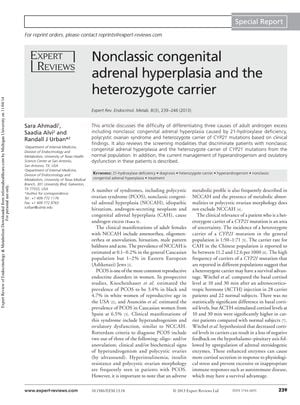
TLDR Identifying nonclassic congenital adrenal hyperplasia and carriers of CYP21 mutations is challenging, and genetic counseling is recommended due to their prevalence.
The 2013 article reviews the challenges in distinguishing nonclassic congenital adrenal hyperplasia (NCCAH) due to 21-hydroxylase deficiency, polycystic ovarian syndrome (PCOS), and heterozygote carriers of CYP21 mutations, noting the prevalence of NCCAH at 0.1-0.2% in the general Caucasian population and 1-2% in Eastern European Jews, and PCOS at 3.4% to 6.5% in women of reproductive age in the USA and Spain. It describes the clinical manifestations of NCCAH, such as menstrual irregularities and hirsutism, and the difficulty in using basal 17-OHP levels for screening. The article also discusses the high frequency of CYP21 mutation carriers and the use of ACTH-stimulated cortisol levels to differentiate carriers from non-carriers. Costa-Barbosa et al. found that a cutoff level of 40 ng/dl for ACTH-stimulated 21-deoxycortisol can distinguish carriers from the normal population with 82% sensitivity and 100% specificity. Treatment for NCCAH includes symptom-directed therapy, with hydrocortisone for growing patients and pharmacological therapy for adults with hyperandrogenism symptoms. The document emphasizes the need for genetic counseling due to the high incidence of heterozygote carriers and calls for further studies to determine the clinical relevance of the carrier state and to develop reliable, cost-effective screening methods. The authors declare no financial conflicts of interest.
View this study on tandfonline.com →
Cited in this study
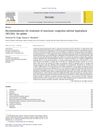
research Recommendations for treatment of nonclassic congenital adrenal hyperplasia (NCCAH): An update
The document suggests treating individuals with nonclassic congenital adrenal hyperplasia who show symptoms, especially those related to excess male hormones.
research Antiandrogens for the Treatment of Hirsutism: A Systematic Review and Metaanalyses of Randomized Controlled Trials
Antiandrogens are somewhat effective in reducing excessive hair growth in women.
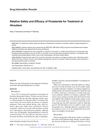
research Relative Safety and Efficacy of Finasteride for Treatment of Hirsutism
Finasteride reduces hirsutism effectively with fewer side effects but is a second-choice treatment due to safety concerns.
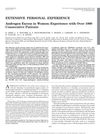
research Androgen Excess in Women: Experience with Over 1000 Consecutive Patients
Most women with excess male hormones have Polycystic Ovary Syndrome, and hormonal therapy can improve symptoms but may cause side effects.
research American Association of Clinical Endocrinologists Medical Guidelines for Clinical Practice for the Diagnosis and Treatment of Hyperandrogenic Disorders
The guidelines help doctors diagnose and treat hormone-related disorders in women.
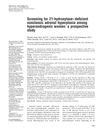
research Screening for 21-hydroxylase–deficient nonclassic adrenal hyperplasia among hyperandrogenic women: a prospective study
Testing basal 17-HP levels is a good way to screen for nonclassic adrenal hyperplasia in women with high androgen levels.
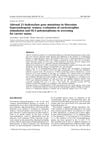
research Adrenal 21-hydroxylase gene mutations in Slovenian hyperandrogenic women: evaluation of corticotrophin stimulation and HLA polymorphisms in screening for carrier status
The study concluded that testing hormone levels after stimulation is not reliable for identifying carriers of 21-hydroxylase deficiency; genetic testing is necessary.
Related

research Nonclassic congenital adrenal hyperplasia and the heterozygote carrier
Identifying nonclassic congenital adrenal hyperplasia and carriers of CYP21 mutations is challenging, and genetic counseling is recommended due to their prevalence.